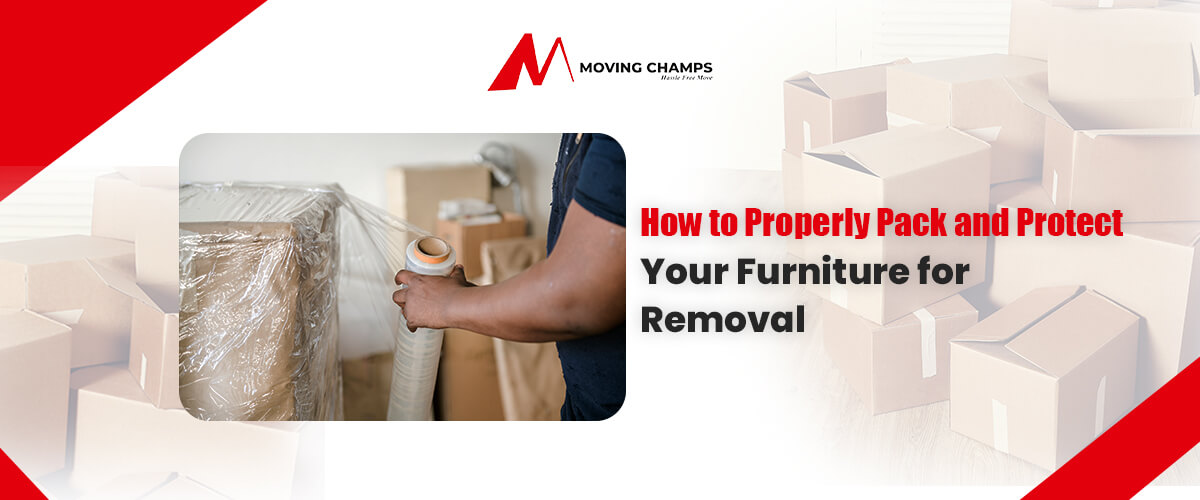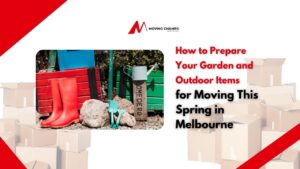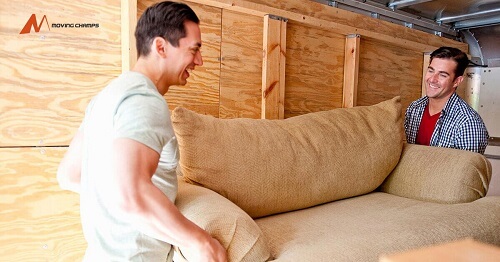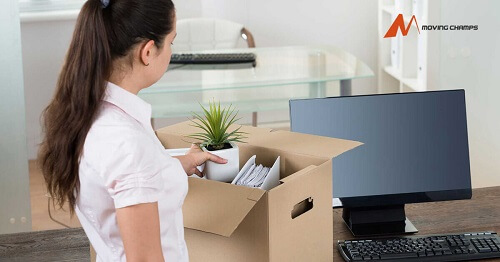How to Properly Pack and Protect Your Furniture for Removal
The Importance of Proper Furniture Packing During a Move
Moving can be a stressful and complex process, particularly when it comes to ensuring your furniture is packed and protected correctly. Whether you’re relocating within the bustling city of Sydney, moving to the cultural hub of Melbourne, or transitioning to the sunny shores of Brisbane, properly packing and protecting your furniture is crucial. This comprehensive guide will provide you with the essential steps and tips to ensure your furniture remains in pristine condition during your move.
Why Proper Packing and Protection Matter
1. Preventing Damage
Furniture can easily be scratched, dented, or broken during a move if not properly packed. Proper packing and protection help prevent damage, ensuring that your furniture arrives at your new home in the same condition it left the old one.
2. Simplifying the Moving Process
When your furniture is properly packed, it is easier to transport. Proper packing materials and techniques can make loading and unloading more efficient, reducing the risk of injury and making the process smoother.
3. Protecting Your Investment
Furniture is often a significant investment. Properly protecting your pieces during a move helps safeguard this investment, avoiding the need for costly repairs or replacements.

Essential Packing Materials
Before you begin packing your furniture, it’s important to gather the right materials. Having the right tools on hand can make a significant difference in the safety and efficiency of your move.
Packing Supplies Checklist
- Moving Blankets and Pads: These provide padding and protection for furniture surfaces.
- Bubble Wrap: Ideal for wrapping delicate items and providing cushioning.
- Packing Tape: Essential for securing protective materials and boxes.
- Shrink Wrap: Helps keep protective coverings in place and prevents scratches.
- Furniture Covers: Specially designed covers for sofas, chairs, and mattresses.
- Cardboard Sheets: Useful for creating barriers between pieces of furniture.
- Plastic Bags: For storing screws, bolts, and other small parts.
- Markers and Labels: For clearly labeling items and parts.
Step-by-Step Guide To Packing and Protecting Your Furniture
1. Create a Moving Plan
Before you start packing, create a detailed moving plan. This plan should include an inventory of your furniture, the packing materials needed, and a timeline for when each item should be packed. This will help keep you organized and ensure you don’t forget any important steps.
2. Disassemble Large Furniture
Disassembling large furniture items, such as beds, desks, and dining tables, can make them easier to move and reduce the risk of damage. Follow these steps:
- Remove Cushions and Loose Items: Start by removing any cushions, pillows, or loose items from your furniture.
- Disassemble as Much as Possible: Take apart any removable parts, such as legs, shelves, and drawers.
- Keep Hardware Organized: Place screws, bolts, and other small parts in labeled plastic bags and tape them to the corresponding furniture piece.
3. Clean Your Furniture
Cleaning your furniture before packing it ensures that no dirt or debris causes scratches or damage during the move. Use appropriate cleaning solutions for each type of material:
- Wood: Use a gentle wood cleaner or a mixture of water and mild soap.
- Upholstery: Vacuum fabric furniture and spot clean any stains.
- Leather: Use a leather cleaner and conditioner to keep the material supple.

4. Protect Fragile and Delicate Items
For delicate items such as glass tabletops, mirrors, and antiques, extra care is required:
- Wrap in Bubble Wrap: Cover fragile items with bubble wrap, securing it with packing tape.
- Use Cardboard Sheets: Place cardboard sheets on either side of the item for additional protection.
- Label Clearly: Clearly mark these items as “Fragile” to ensure they are handled with care.
5. Wrap Furniture with Moving Blankets and Pads
Moving blankets and pads provide cushioning and protection for your furniture. Follow these steps:
- Cover Entire Surface: Drape the blanket or pad over the entire piece of furniture, ensuring all surfaces are covered.
- Secure with Tape or Shrink Wrap: Use packing tape or shrink wrap to hold the blanket in place.
6. Use Shrink Wrap for Added Protection
Shrink wrap is particularly useful for protecting upholstered furniture and keeping drawers and doors closed:
- Wrap Upholstered Furniture: Completely wrap sofas, chairs, and mattresses in shrink wrap to protect against dirt and moisture.
- Secure Loose Parts: Use shrink wrap to secure any loose parts or components that cannot be removed.
7. Protect Furniture Corners and Edges
Corners and edges are particularly vulnerable to damage. Use special corner protectors or cardboard:
- Attach Corner Protectors: Place corner protectors on the edges of tables, dressers, and other items with sharp corners.
- Reinforce with Cardboard: Cut pieces of cardboard to fit over the edges and secure them with tape.
8. Pack Smaller Items Separately
Smaller items, such as lamps, picture frames, and decor, should be packed separately in boxes:
- Use Bubble Wrap: Wrap each item individually in bubble wrap.
- Pack in Sturdy Boxes: Place wrapped items in sturdy moving boxes, filling any empty spaces with packing paper or peanuts to prevent shifting.
- Label Boxes: Clearly label each box with its contents and the room it belongs in.
9. Load Furniture Carefully
When loading your furniture onto the moving truck, it’s important to do so in a way that minimizes the risk of damage:
- Heaviest Items First: Load the heaviest items first, placing them on the bottom.
- Distribute Weight Evenly: Ensure the weight is evenly distributed to prevent shifting during transport.
- Use Straps and Ties: Secure furniture with straps and ties to keep everything in place.

Moving Tips for Major Australian Cities
1. Moving to Sydney
Navigating a move in Sydney? Plan ahead to avoid peak traffic hours, especially around the CBD. Consider hiring local movers familiar with the city’s unique challenges for a smoother transition. Sydney is known for its bustling streets and heavy traffic. To make your move smoother:
- Plan for Traffic: Schedule your move during off-peak hours to avoid congestion.
- Obtain Parking Permits: Ensure you have the necessary permits for parking the moving truck.
2. Moving in Melbourne
- Weather-Proof Your Move: Prepare for rain by using waterproof coverings and keeping items dry.
- Consider Public Transport Routes: Be aware of tram routes and ensure they won’t obstruct your moving truck.
Moving to Melbourne? Account for the city’s unpredictable weather and tram routes. Scheduling your move during off-peak hours can help you avoid traffic and ensure a seamless relocation. Melbourne’s unpredictable weather can pose challenges during a move:
3. Moving to Brisbane
Moving to Brisbane? Early morning moves are ideal to beat the heat and humidity. Be mindful of narrow streets in older suburbs, and consider hiring movers who know the local area well. Brisbane’s warm climate requires special considerations:
- Avoid the Heat: Move during the cooler parts of the day to avoid overheating.
- Flood Awareness: Be mindful of flood-prone areas and plan your route accordingly.
4. Moving to Perth
Moving to Perth? Plan your move outside of peak traffic times to avoid delays on major roads. Take advantage of Perth’s mild weather by scheduling your move during cooler parts of the day. Perth’s geographic isolation requires careful planning:
- Plan for Long Distances: If moving from another part of Australia, plan for long-distance transport.
- Hire Local Experts: Utilize local moving companies that are familiar with the area.
5. Moving in Adelaide
Moving to Adelaide? Opt for a mid-week move to avoid weekend traffic. Adelaide’s grid layout makes navigation easier, but be prepared for narrow lanes in older neighborhoods. Adelaide offers a relaxed environment, but still requires proper planning.
- Engage with Local Services: Use local cleaning and maintenance services to prepare your new home.
- Coordinate with Building Management: If moving into a multi-story building, coordinate with management for elevator access.
6. Moving to Canberra
Moving in Canberra? Schedule your move outside of parliamentary sitting weeks to avoid congestion. Canberra’s well-planned roads make navigating easier, but winter moves can be chilly. Canberra’s governmental environment means adhering to specific regulations:
- Stay Informed: Ensure all business-related permits and licenses are up to date.
- Plan for Extreme Weather: Prepare for the city’s temperature extremes by protecting items from heat and cold.

Post-Move Tips for Unpacking and Setting Up
1. Unpack Strategically
Begin unpacking with essential rooms, such as the kitchen and bedrooms. This ensures you can function comfortably while unpacking the rest of your home.
2. Assemble Furniture Carefully
Follow these steps for reassembling your furniture:
- Follow Instructions: Use the assembly instructions provided by the manufacturer.
- Organize Parts: Lay out all parts and tools before starting.
- Take Your Time: Avoid rushing to prevent mistakes or damage.
3. Clean and Arrange
Once your furniture is in place, clean each piece and arrange your new home to your liking. This will help you settle in quickly and comfortably.
Also Read – Moving Furniture Into a New Home: What You Need to Know
Conclusion
Properly packing and protecting your furniture is crucial to ensuring a smooth and damage-free move. By following the steps outlined in this guide, you can safeguard your belongings and make the moving process more efficient and less stressful. Whether you’re moving within Sydney, relocating to Melbourne, or transitioning to Brisbane, these tips will help you protect your furniture and enjoy a seamless move to your new home.
Investing in high-quality packing materials, taking the time to disassemble and wrap furniture properly, and hiring professional movers can make a significant difference. With careful planning and attention to detail, you can ensure that your furniture arrives at your new home in perfect condition, ready to help you create a comfortable and welcoming space.
Our Furniture Removalists, Piano Removalists, Spa Removalists, Man With a Van are dedicated to successful moving. Whether you’re moving your furniture, a grand piano, or a heavy spa, our experienced team handles every job with care and expertise. We prioritize customer satisfaction and ensure every move is efficient, safe, and stress-free. Trust us for all your moving needs and get the best results from our reliable service.
Phone: 1800 870 500
Email: info@movingchamps.com.au
Popular Posts
Popular Categories
Our Services
Request A Free Quote

















